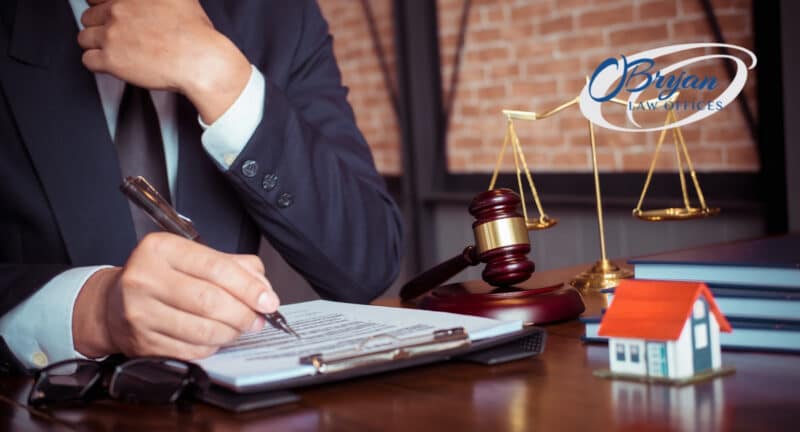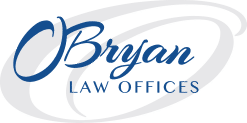Bankruptcy Planning And Asset Protection

Protecting Assets in Bankruptcy

At O’Bryan Law Offices, we understand that bankruptcy is a major step in your life. Over the last 20 years, thousands of clients have placed their trust in our law firm. With this level of bankruptcy experience, we know proper planning for protecting assets in bankruptcy and maximizing your debt relief are priorities.
Many people think that filing for bankruptcy means they’ll lose everything they own. However, this is a common misconception. Protecting assets in bankruptcy is possible if you “exempt” an asset from being sold to repay creditors. Whether or not protecting assets in bankruptcy proceedings is possible depends on the exemptions available in Kentucky. Additionally, you can choose between a state exemption system or a federal exemption system. You can’t mix the exemptions from these lists, so you’ll want to choose the system that protects your most important assets.
Many exemptions only apply to certain types of property. Exemptions may protect your home, automobile, or personal property, for example. In certain cases, you can only safeguard a specific dollar amount of an asset, but in others, you can protect the entire asset’s value. If no other exemption directly covers a particular piece of property, you may need to use a “wildcard exemption” to protect it.
Our experienced Kentucky bankruptcy planning and asset protection attorneys at O’Bryan Law Offices can help you determine your exempt assets.
How Do Exemptions Work in Chapter 7 Bankruptcy?
Chapter 7 bankruptcy is often known as liquidation bankruptcy. Repaying creditors the most money possible is the goal of your bankruptcy trustee. There are some exceptions, but your assets and property largely become part of the bankruptcy estate. This means the trustee can sell nonexempt property and give the proceeds to your creditors. Chapter 7 exemptions spell out how much and which property you can keep.
Most state and federal systems allow you to keep some equity in your home, car, and other personal belongings. In some areas, you can claim an unlimited homestead exemption, allowing you to keep your entire home. Unless they are worth a large amount of money, personal possessions and clothing are usually exempt.
Even if you are unable to completely exempt an asset, the trustee may abandon it if the value is not much greater than the exemption level. Typically, selling an asset is costly, and it is only worth the effort to sell the item if there will be enough money left over to repay creditors. If the trustee abandons the property, you will be able to keep it.
How Do Exemptions Work in Chapter 13 Bankruptcy?
Protecting assets in bankruptcy is possible in a Chapter 13 filing. You can keep your property, but your debts are reorganized and you repay them over a 3 to 5 year period. The amount you must pay certain creditors is determined by your eligible exemptions, but debts, such as priority debts and secured debts, must be paid in their entirety.
If you have unsecured debt that isn’t considered high-priority, it doesn’t have to be paid in full. The amount that must be paid to non-priority unsecured creditors is determined by the value of your nonexempt assets. This means that your monthly plan payments will be cheaper, but you will have to repay creditors using nonexempt property.
Your exempt assets, on the other hand, will not be sold by the trustee to repay creditors. Instead, you must pay the creditors the percentage of your debt that you are unable to exempt in order to have your plan confirmed and receive a discharge. The goal of this arrangement is to ensure your decision to file a Chapter 13 bankruptcy, instead of a Chapter 7, does not harm your creditors.
Secured vs. Unsecured Debts
You’ll need to find out which of your debts are secured and which are unsecured. Secured debts are those debts that are backed by collateral. Collateral is a tangible, physical thing that may be taken by your creditor to help satisfy your debt if you default. Your home and car are examples of collateral for secured debts.
On the other hand, unsecured debts are not backed by collateral. This typically includes credit cards and medical bills. Secured debts are not discharged in a Chapter 7 bankruptcy unless you decide to surrender the collateral. On the other hand, most unsecured debts are dischargeable. The nature of your debts will greatly impact the type of bankruptcy you file.
What Is an Asset Inventory?
You need to take inventory of your assets. This is helpful in protecting assets in bankruptcy for a number of reasons. First, when filing bankruptcy, you are required to fully disclose your assets and liabilities. Taking inventory of what you own will help. Secondly and more importantly, certain classes of assets cannot be taken from you to satisfy your creditors. If you understand which of your assets are exempt and which are not exempt, you will have a greater chance at protecting assets in bankruptcy and understanding which type of bankruptcy is in your best interests.
The Three Types of Assets When Filing Bankruptcy
It is helpful to know the three types of assets that can be included in a bankruptcy estate. This way you can figure out which of your assets could be liquidated under Chapter 7:
- Personal belongings or material things include clothing, furniture, artwork, and automobiles.
- Real estate or real property is land and improvements or buildings attached to land, such as a house or barn.
- Intangible assets, as their name implies, include property that isn’t physically tangible, yet has worth. Child support, alimony, and retirement funds are examples of intangible assets.
Assets You Are Entitled To Receive
Even if you don’t have physical possession of an asset, it becomes part of your bankruptcy estate if you are entitled to receive it at the time you file bankruptcy. Some examples include royalties from a book you published before filing bankruptcy, property you’ve loaned someone, and security deposits you’ve given to a landlord. Certain assets you get or become entitled to receive within 180 days of filing bankruptcy, such as life insurance payments, property received from a divorce settlement, and inheritances, are also considered assets of your bankruptcy.
Do I Have to List Everything?
When filing for bankruptcy, debtors must provide a detailed list of their assets to the court so the trustee can administer and liquidate the estate as needed. This is often known as a schedule of assets. When completing an asset schedule, both secured and unsecured assets must be recorded. Assets in bankruptcy cases include the following:
- A primary or secondary residence, or both
- Vehicles
- Financial resources (e.g., investments or deposit accounts)
- Items for the home and personal usage
- Business-related real estate
- Farming and commercial fishing-related property
- Any other property that isn’t mentioned elsewhere
If a debtor wants to claim any of the above assets as exempt, protecting assets in bankruptcy first includes filing a separate schedule detailing the assets. If you conceal or purposefully fail to reveal assets in your bankruptcy case, you risk having your petition for bankruptcy discharged, denied, or cancelled.
What is a no-asset bankruptcy case?
Assets cannot be liquidated if an estate has no nonexempt assets. Most Chapter 7 bankruptcy petitions have the “no-asset” designation, according to the Administrative Office of the United States Courts.
In this case, the trustee files a “no asset” report with the court. Unsecured creditors will not get distributions from the bankruptcy case since the estate does not own unprotected assets that can be liquidated.
If nonexempt assets are later discovered by the trustee, they can still be recovered and sold from the bankruptcy estate. The court notifies the debtor’s unsecured creditors, who have a specified time frame to file proofs of claim to the sale proceeds.
401K, IRA and Other Pension Plans
Continue to make contributions to your 401(k), IRA, or other pension plans. These assets are generally exempt from bankruptcy with certain exceptions. The reasoning behind this is that if your bankruptcy forced you to give up retirement savings to pay off creditors, bankruptcy could never truly provide the “fresh start” Congress intended. This wouldn’t be good for you or society. That’s why Congress created safeguards for properly-qualified retirement plans.
Leverage Credit
Act sooner rather than later. The earlier you plan for bankruptcy, the more options you will have. The more options you have, the more leverage you will have with your creditors. Planning for bankruptcy includes hiring a lawyer. O’Bryan Law Offices can provide invaluable counsel during this time and protecting assets in bankruptcy is an area of our expertise.
Contact O’Bryan Law Offices for Bankruptcy Planning and Asset Protection
When you work with O’Bryan Law Offices, we help you get the debt relief you need to have a fresh start. Our Kentucky bankruptcy lawyers offer a free initial consultation to discuss your finances. Call our office at 502-339-0222.
